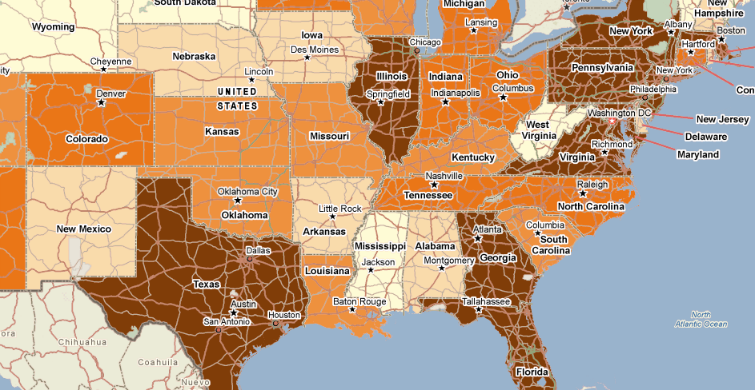Challenges with Immigration Data

Since President Obama announced his Executive Order on immigration on November 20th, immigration has been a hot topic in the news. Some are debating the constitutionality of the action, which directs the Department of Homeland Security (DHS) to expand programs that defer deportation for classes of undocumented immigrants. Others are busy trying to determine who qualifies under the order. Regardless of where you stand, the question of how to best fix a broken immigration system is proving one of the most important policy issues of the day.
At PolicyMap, we regularly get inquiries from users about what immigration data exists that can help support policy decisions in this area. As you might expect, getting a precise count of the number of immigrants, particularly those without documentation, is a challenge. Given that it is not in the best interest of undocumented immigrants to self-report their legal status when surveyed, demographers have to generate estimates using other existing data (much of which we do have on PolicyMap).
The nonpartisan Pew Center, generally seen as an authority in this area, calculates the undocumented immigrant population using the “residual” method. So, what does this entail? According to Pew senior demographer, Jeffrey Passel, the basic methodology is to estimate the total number of immigrants in the country legally and the total number of foreign-born residents. Then subtract the legal immigrants from the total to arrive at an estimate of undocumented immigrants.
Let’s start with the total. According to Passel, Pew uses either the Census’ American Community Survey “foreign-born” estimates or the Current Population Survey as an indication of the total number of immigrants in the country. The Census broadly defines “foreign-born” as anyone not living in the U.S at the time of birth, so this includes naturalized U.S. citizens, lawful permanent residents (immigrants), temporary migrants (such as students), humanitarian migrants (such as refugees), and persons illegally present in the United States. The map below shows the number of foreign-born people in the country during the 2008-2012 time period.
The next step is to determine the number of people not born in the US, but who have been granted legal residency here. This data comes from several places, with the main sources being the Department of Homeland Security’s count of “green card” holders, people who were admitted to the country as lawful permanent residents (LPR), as well as the refugee count, as provided by the Office of Refugee Resettlement. The map below shows the number of people who received LPR status in FY 2013. Beyond adding these populations together, demographers also factor in deaths, departures, and new arrivals each year to arrive at an estimate of the number of legal residents.
Once arriving at the total “foreign-born” population and the total number of legal residents, demographers then subtract the latter from the former (though, of course, it is a bit more complicated than that in practice). While Pew’s estimates are valuable at the national level, the Center unfortunately does not release lower geography estimates of undocumented immigrants. So, for the purposes of mapping, the best resources we have are the ACS “foreign-born” estimates and the DHS Lawful Permanent Resident data.
If you would like to learn more about Pew’s methodology for counting the undocumented immigrant population, you can read their recent report “As Growth Stalls, Unauthorized Immigrant Population Becomes More Settled.” And, if you have used the immigration data available on PolicyMap, we would love to hear about how you have used it!